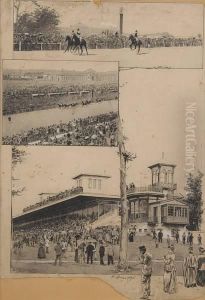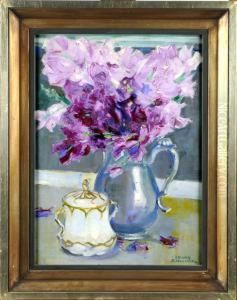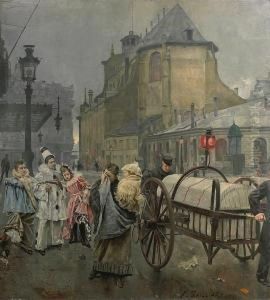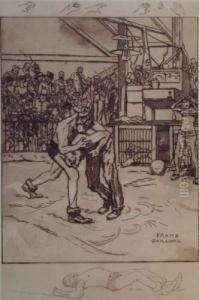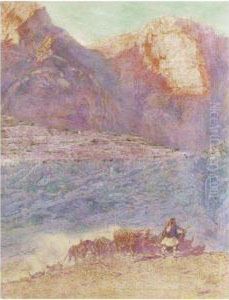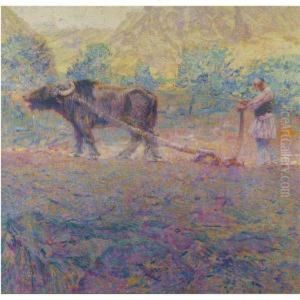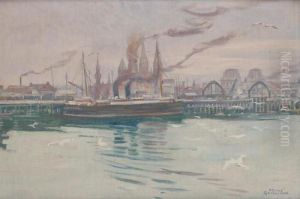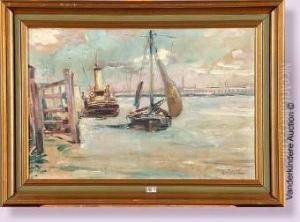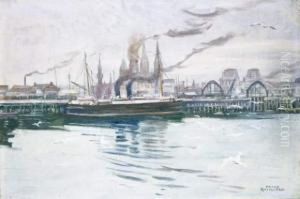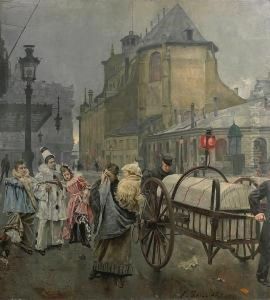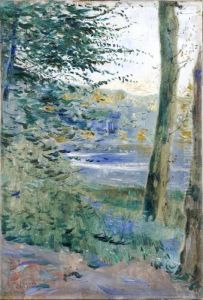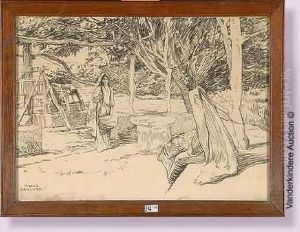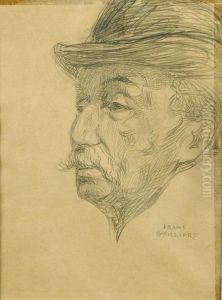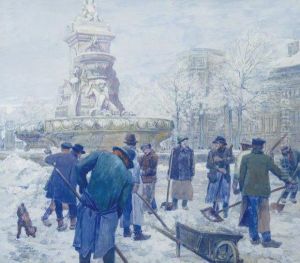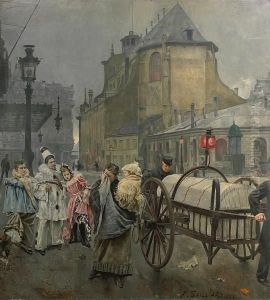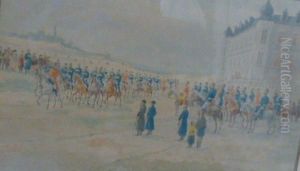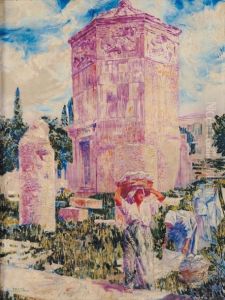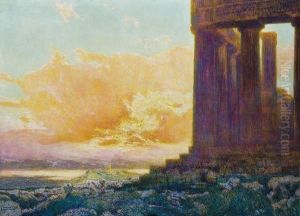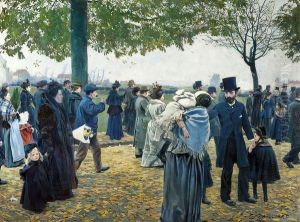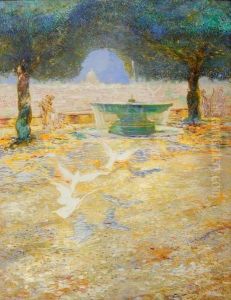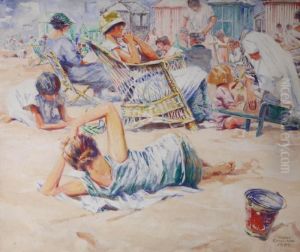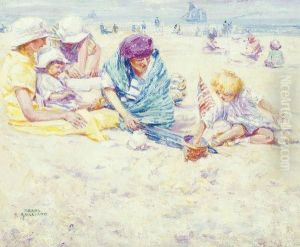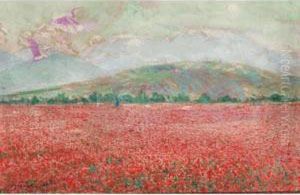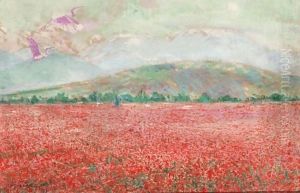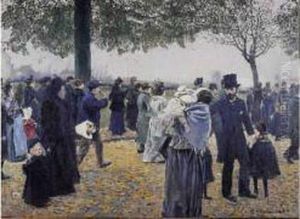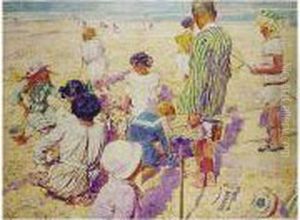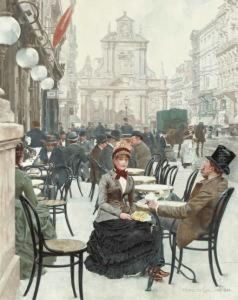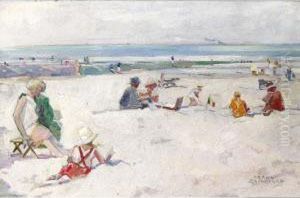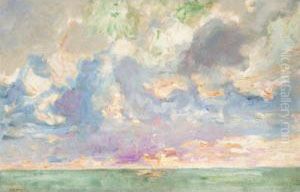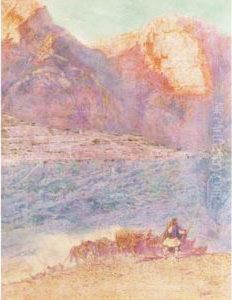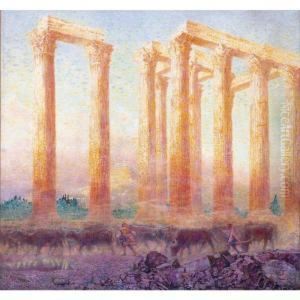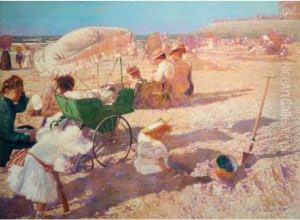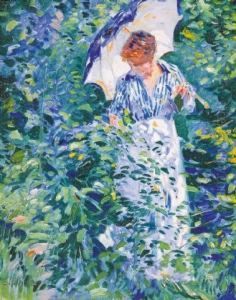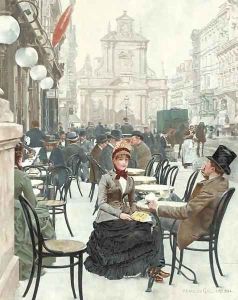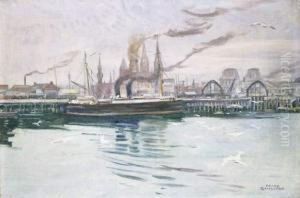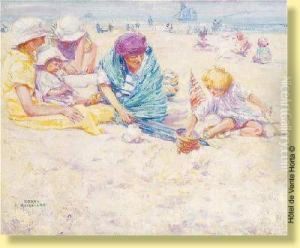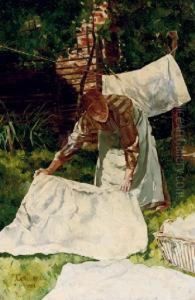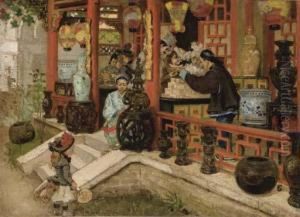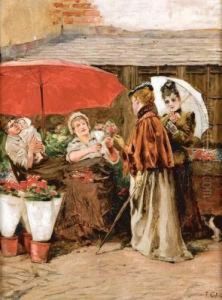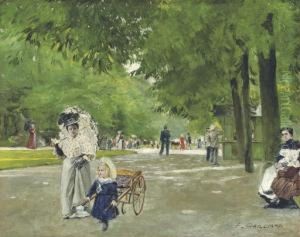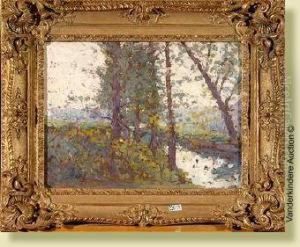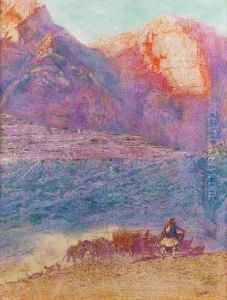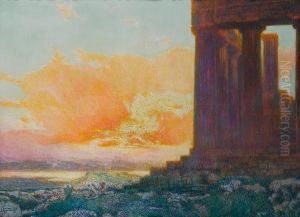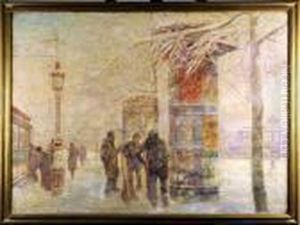Franz Bernard Gailliard Paintings
Franz Bernard Gailliard was a Belgian painter, born on February 26, 1861, in Brussels, Belgium. He was known for his vibrant use of color and his ability to capture light in his work. Gailliard showed an early interest in art and began his formal education at the Académie Royale des Beaux-Arts in Brussels, where he studied under the tutelage of Jean-François Portaels.
Gailliard's work was primarily in the style of Impressionism and Luminism, with a focus on landscapes, city scenes, and interior settings. He was particularly adept at depicting various lighting conditions, from the soft glow of dawn to the harsh midday sun. His paintings often featured a dynamic interplay of light and shadow, which added a lively and realistic quality to his compositions.
Throughout his career, Gailliard exhibited his work at various venues, including the Paris Salon and the Brussels Salon. He was a contemporary of other Belgian artists such as James Ensor and Fernand Khnopff, who were also pushing the boundaries of traditional art during the late 19th and early 20th centuries.
Despite his talent, Gailliard did not gain the same level of fame as some of his contemporaries. However, his contributions to Belgian art were significant, and his works have been collected and displayed in museums and galleries across Belgium and beyond.
Franz Bernard Gailliard's dedication to his craft continued throughout his life until his death on March 18, 1932, in Schaerbeek, Belgium. Today, he is remembered as an important figure in Belgian Impressionism and Luminism, and his works continue to be appreciated for their beauty and technical skill.
